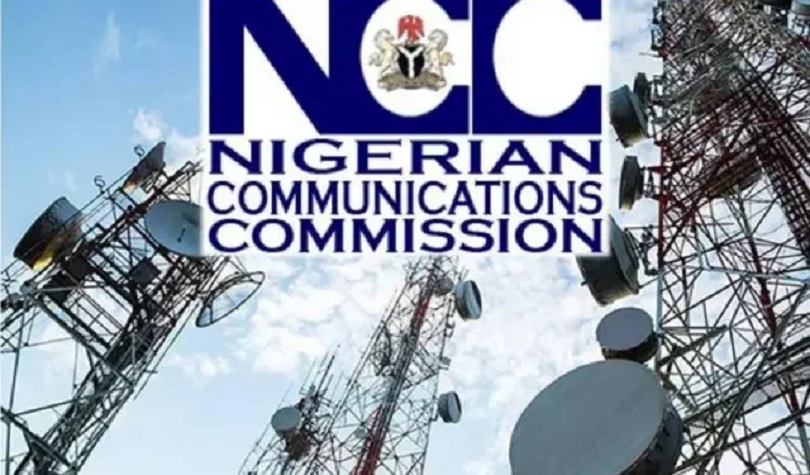Telecom
How to Solve Your Network Performance Problems

Everyone wants their internet and private networks functioning at top levels all day, every day. For many people, it means quicker responses to queries, seamless communication, and tasks getting completed in good time. It’s what makes work smooth and productive for many people and businesses.

We get frustrated when networks degrade or fail. Our work slows down and productivity levels dip. And if connectivity is an important part of your business’s service delivery, your customers may experience network defects as a poor product of customer experience coming from your end.
If you don’t solve the problem early enough, you could lose clients. In the end, it might cost you a lot of (unearned) money.
So you’ll want to deal with your network issues as quickly as you can. Even better, you should be preventing them from happening in the first place.
First, you need to know what network performance issues you’re most likely to face. When you’ve learned this, you’ll be better able to prevent them, or deal with them if they crop up.
Common Network Performance Issues that Businesses Face
- Congested Bandwidth
Maybe you often use more data at any given time than your bandwidth can take care of. It’s not large enough to accommodate the amount of traffic that goes through your networks. If you have the right monitoring tools, you’ll see what users and devices contribute the most to the congestion.
- Failed Hardware
In some cases, network outages are the result of failed devices in the network infrastructure. Common culprits in this category include broken cables and damaged switches. Disabled devices can also cause networks to slow down or shut down.
- Network Loop
A network loop is when there are multiple paths to two endpoints on a network. This usually happens if there’s a problem with the way the network is configured. When there’s a loop, traffic keeps going back to its source– and growing in the process –instead of stopping at its destination. The expanding traffic will choke your bandwidth and slow your network.
- Incorrect Device Configuration
When devices are poorly configured, they won’t function as they should. This, in turn, causes performance problems for the networks that they support, or are a part of.
- Hidden Devices
Your employees may have connected more devices or applications to your network than what’s officially accounted for. These additions could be slowing your network speed. Unless you have a network monitoring tool or system that tracks these things, you won’t know what’s weakening your network’s performance.
- Prolonged Backup Process
Let’s say you set data backup to happen overnight. But for some reason, it extends into the working day. If it’s still going on during work hours, it could impede traffic on your networks. Prolonged backup processes, regardless of when they’re initiated, will slow down other significant traffic being generated at the same time.
How Do You Know When You Have a Network Problem?
There could be a problem with your network if you detect any of these things:
- Network services are not available for your users at a particular time
- Increased network latency (i.e. slow network)
- Complaints about slow response times from your end-users
- Clients frequently get disconnected from your applications
How to Solve Your Network Problems
Here’s how to prevent common network issues from cropping up, and deal with them if they arise.
- Increase Your Network Visibility
Deploy network monitoring tools to help you track the traffic on your networks. They will give you greater visibility of your networks and reveal what the data consuming users and devices are, so you can curb the excess traffic that may be coming from them.
- Prioritize Applications
Assign more bandwidth to applications that are closer to the top of your priority list, and less to those closer to the bottom. You may even have to remove some applications from your systems if they don’t contribute to your operations or productivity.
- Use Compression
One way to free up your network channels is to compress large files before sharing them. There’s a catch: it may take a while to compress files, especially if they’re really large. If you’re dealing with transactions, you will be better off adopting a technology that enables the speedy transmission of data instead.
- Time Your Traffic
This solves the problem of backup-induced network slowdowns. You can restrict heavy-duty work like backups to times in which networks have little else passing through them. This spreads out your traffic more evenly across the time that you have.
- Shut Out Junk Traffic
Put up things like firewalls and spam filters that can prevent irrelevant traffic from clogging your channels. Malware could also affect your network’s performance as well, so you should have a reliable antivirus installed too.
- Check Device Configurations
If poorly configured devices are a cause of network difficulties, it makes sense for you to ascertain that their configurations are in order before they are in full use. This will reduce the incidence of network loops and slowdowns.
- Educate Your Staff
Encourage employees to adopt data saving practices. They can access documents from a single cloud platform, instead of sharing those documents and holding them in private storage. Let them know how connecting more devices to the network than you authorize can stifle network speed and ultimately cost your company. Train them to react appropriately to risks like malware and DDoS attacks that could slow your networks.
Conclusion
The quality of your network will play a part in determining your organization’s productivity. If you have continuous connectivity problems, it could negatively affect your work, your customer’s perception of your business, and your revenues in the long run.
It also helps to have a proper IT services provider take care of your network issues. That’s what you’ll get from us at Layer3. For over a decade, we have helped organizations in the public and private sector solve their IT problems. We continue to deliver network security, virtualization, and data center solutions to our clients across Nigeria, enabling them with technologies that drive them up the growth ladder.
Is your business struggling with network issues? We can help you fix them. Send us an email via [email protected], or contact us here, and we’ll get back to you.
Telecom
Airtel Africa Partners Starlink to Launch Direct-to-cell Service in 14 Markets

Airtel Africa said on Tuesday it has partnered with SpaceX to introduce Starlink’s direct-to-cell satellite technology to all its 14 markets.

The satellite-to-mobile service will begin across Africa in 2026, with data for select applications and text messaging, Airtel Africa said in a statement.
Airtel Africa customers with compatible smartphones in regions without terrestrial coverage will have network connectivity through Starlink.
The deal also includes “support for Starlink’s first broadband Direct to Cell system, with next-generation satellites that will be capable of providing high-speed connectivity to smartphones with 20x improved data speed,” Airtel Africa said.
Last month, Kyivstar, Ukraine’s largest mobile operator, became the first in Europe to launch Starlink’s direct-to-cell satellite technology in a bid to keep millions connected amid wartime blackouts and disrupted infrastructure.
Telecom
NCC Blames NOGASA for Abuja Outage

Nigerian Communications Commission (NCC) has blamed the actions of the National Oil and Gas Suppliers Association (NOGASA), for the recent telecom blackout experienced in the Abuja area.

NCC
A statement issued on Friday by the Head, Public Relations, NCC, Mrs. Nnenna Ukoha, while acknowledging the challenges and impact of the degraded Quality of Service (QoS) in the area on subscriber experience, stated: “The challenges are a result of the activities of the National Oil and Gas Suppliers Association (NOGASA), which disrupted diesel supplies to sites with the attendant telecommunications services outages in Abuja.”
She however disclosed that the telecommunications sector regulator is committed to ensuring restoration of seamless communication services to the affected area, and all Nigerians at large, and recognizes the importance of reliable power supply for the provision of optimal telecommunication services.
“The Commission is collaborating with major stakeholders and licensees to address these challenges, largely caused by disruption to diesel supply affecting IHS Nigeria Limited, the colocation provider responsible for powering Airtel and MTN base stations in the affected areas.
“The NCC is actively engaging with relevant stakeholders to address the diesel supply issues and explore sustainable solutions.
“The Commission urges all parties to work together to collaboratively resolve these challenges swiftly by removing the diesel supply bottlenecks affecting critical telecommunications infrastructure, arising from NOGASA’s actions.
Ad image
“In the face of these challenges, we reiterate our commitment to fostering a conducive environment for the growth and sustainability of telecommunications services in Nigeria.
“We are taking proactive steps to facilitate dialogues between the impacted service providers and other stakeholders to promptly resolve the diesel supply concerns that have negatively impacted service quality.”
While assuring that the Commission remains dedicated to effectively managing the situation and will keep the public updated on progress towards restoring full telecommunication services in Abuja, Mrs. Ukoha appreciated subscribers for their patience.
“We thank telecommunications subscribers for their understanding and patience during this period and reaffirm our commitment to delivering high-quality telecommunications services nationwide,” she said.
Telecom
NITDA Charts Path for Kano as Innovation Hub

Mallam Kashifu Inuwa Abdullahi, Director-General of the National Information Technology Development Agency (NITDA), has called for a fundamental shift in Kano State’s economic strategy, urging stakeholders to embrace innovation, technology and collaboration as the drivers of growth in the 21st century.

Mallam Kashifu Inuwa Abdullahi, Director-General of the National Information Technology Development Agency (NITDA)
This is contained in a press statement e-authored by the Director of Corporate Communications & External Relations at NITDA, Hajia Hadiza Umar.
Speaking at the Kano Startup Weekend, Mallam Abdullahi acknowledged Kano’s long-standing reputation as the commercial nerve centre of Northern Nigeria and the wider Sahelian region, noting that its history of trade, enterprise and human capital provided a solid foundation for future growth.
Abdullahi emphasised that while these strengths powered Kano’s success for centuries, the modern economy now offered even greater opportunities through innovation and technology.
He described innovation as the process of transforming ideas into impactful solutions through commercialization, stressing that when ideas were effectively deployed, they created value, solved societal challenges and generated sustainable economic growth.
He noted that Kano’s large market, strategic location and vibrant entrepreneurial culture placed it in a strong position to take advantage of innovation-driven opportunities.
According to him, “Innovation is the process of taking an idea from inception to impact. Invention on its own is a cost centre, but when you commercialise an idea, when you turn it into a product or service that solves a real problem and creates value, that is when you begin to drive economic growth and inclusion.”
He noted that the state hosted numerous degree-awarding institutions across federal, state and private ownership, providing a strong base for human capital development.
However, the NITDA DG expressed concern that these institutions often operated in isolation from industry, with research outputs rarely translating into commercial or industrial applications.
He explained that innovation did not happen in silos and stressed the need for a strong, interconnected ecosystem that brought together academia, industry, startups, entrepreneurs and government.
According to him, universities should conduct research informed by industry needs, industries should leverage research to improve productivity and competitiveness, and startups should serve as the bridge that converted ideas into market-ready solutions.
The NITDA boss further encouraged entrepreneurs to leverage technology to build businesses that could grow beyond local markets, explaining that innovation-driven enterprises had the power to scale rapidly, create jobs and position Kano competitively at both national and global levels.
According to him, digital platforms and emerging technologies now made it easier for startups to reach wider markets and develop solutions that were previously unimaginable.
“You can start your business here in Kano, but your thinking must be global from day one. Technology has removed barriers. With the right skills and platforms, a startup in Kano can build solutions that serve not just Nigeria, but the world,” he noted.
Highlighting NITDA’s ongoing interventions, its Director-General outlined the Agency’s commitment to building national innovation capacity through targeted human capital development programmes.
He cited the Digital Literacy for All (DL4ALL) initiative, which aimed to equip Nigerians across all segments of society with essential digital skills, and the 3 Million Technical Talents (3MTT) programme, designed to produce a pipeline of globally competitive technical professionals in areas such as software development, data analysis and emerging technologies.
He said, “Through DL4ALL, we are ensuring that Nigerians at all levels have the basic digital skills needed to participate in the digital economy, while 3MTT is deliberately building a pipeline of globally competitive technical talents who can drive innovation, create jobs and attract investment.”
Abdullahi explained that these programmes were key pillars of President Bola Ahmed Tinubu’s Renewed Hope Agenda, which prioritised skills development, innovation, job creation and inclusive economic growth as pathways to national prosperity.
According to him, empowering Nigerians with digital and technical skills was essential for building a resilient economy capable of competing in the global digital landscape.
“President Tinubu’s Renewed Hope Agenda is about investing in people, empowering them with relevant skills and creating opportunities for inclusive growth.
“At NITDA, we are using digital skills and innovation as tools to translate that vision into real economic impact for Nigerians,” he said.
The NITDA boss urged all stakeholders in Kano to work together to build a functional innovation ecosystem that could unlock the state’s vast potential and expressed confidence that with the right mindset, strong collaboration and sustained investment in digital skills and innovation, Kano could reclaim its historic leadership role and emerge as a major innovation and entrepreneurship hub in Nigeria and beyond.

 E-Financial3 days ago
E-Financial3 days agoSupreme Court Clears Fidelity Bank in ₦225bn Sagecom Saga

 E-Financial3 days ago
E-Financial3 days agoPreventing Financial Crimes Amid Mounting Insecurity: Why Following the Money is Now a Survival Imperative

 E-Financial3 days ago
E-Financial3 days agoUnion Bank Clinches Top Workplace Practice Honour at Sustainability Awards

 Broadcasting2 days ago
Broadcasting2 days agoDavido, Babajide Sanwo-Olu, Karl Toriola, Others To Be Honoured At The Most Influential People of African Descent Awards In Lagos

 News2 days ago
News2 days agoSiBAN New Executive Council to Champion Vision for Nigeria’s Digital Economy

 E-Financial2 days ago
E-Financial2 days agoTax Reform or Financial Exclusion? The Trouble with Mandatory TINs

 Telecom2 days ago
Telecom2 days agoNCC Blames NOGASA for Abuja Outage

 General News2 days ago
General News2 days agoNITDA DG Calls for Innovation-Led Economic Rebirth @ Kano Startup Weekend



























